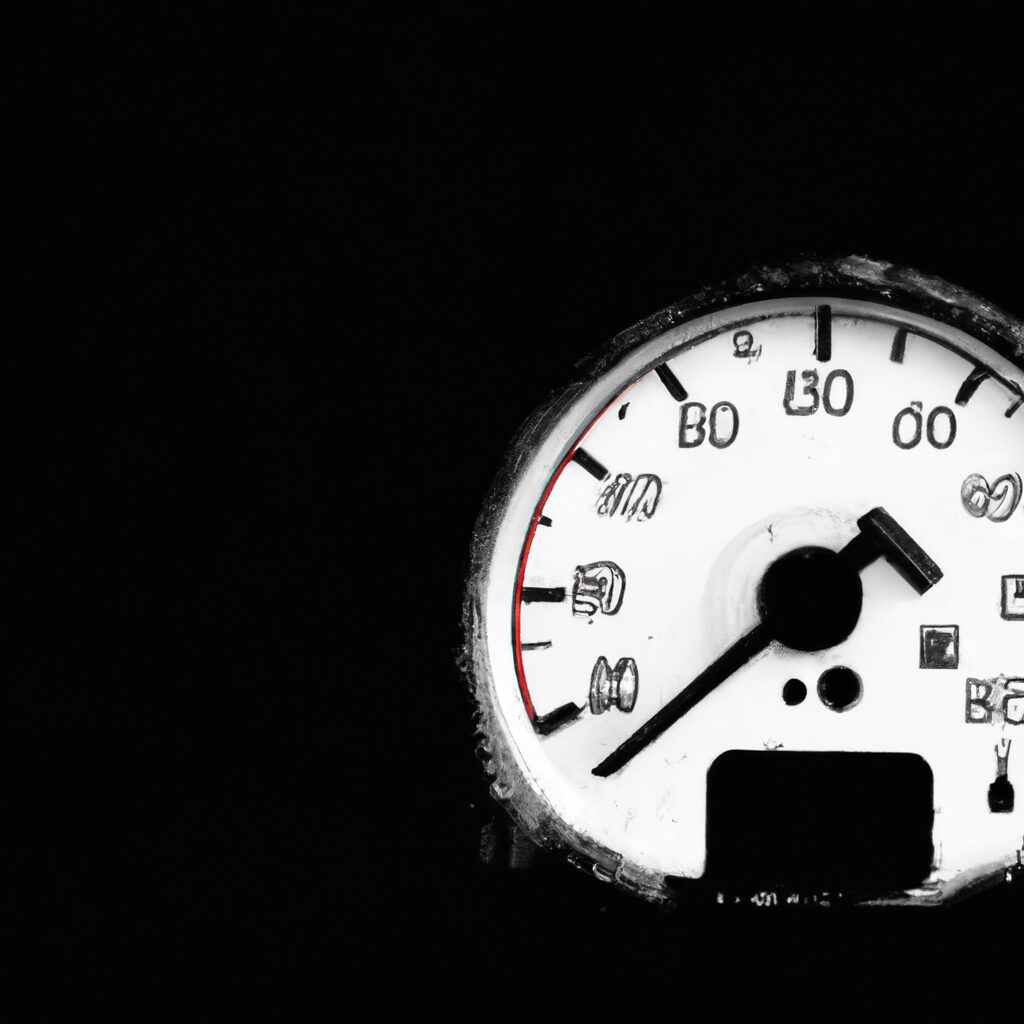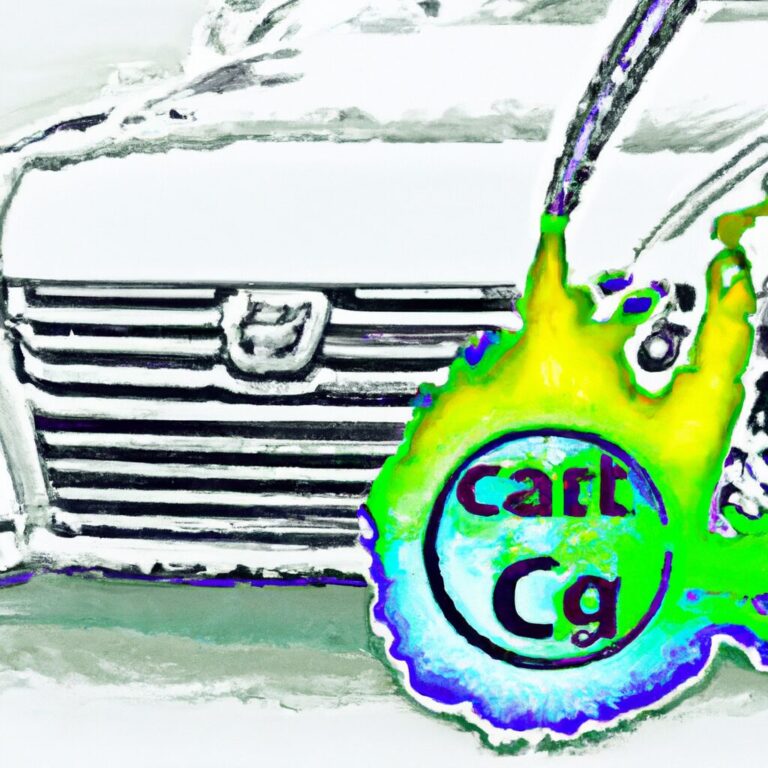speedometer and gas gauge not working
Introduction
When your speedometer and gas gauge are not working, it can be a frustrating experience. Not only can it be difficult to determine how fast you are going, but it can also be difficult to know how much fuel you have left in your tank. Fortunately, there are a few steps you can take to diagnose and repair the issue. In this article, we will discuss the common causes of speedometer and gas gauge not working, as well as how to troubleshoot and repair the issue.
How to Diagnose and Repair a Speedometer and Gas Gauge That Are Not Working
Diagnosing and repairing a speedometer and gas gauge that are not working can be a daunting task. However, with the right tools and knowledge, it can be done relatively easily. This guide will provide step-by-step instructions on how to diagnose and repair a speedometer and gas gauge that are not working.
First, you will need to determine the cause of the malfunction. If the speedometer and gas gauge are not working, it is likely due to a faulty connection or a faulty component. To diagnose the issue, you will need to check the wiring and connections. Start by checking the wiring harness for any loose or corroded connections. If any are found, clean them and reconnect them securely.
Next, you will need to check the speedometer and gas gauge for any signs of damage. If the speedometer and gas gauge are damaged, they will need to be replaced. If the speedometer and gas gauge are not damaged, you will need to check the sending unit. The sending unit is responsible for sending the signal from the speedometer and gas gauge to the instrument cluster. If the sending unit is faulty, it will need to be replaced.
Once you have determined the cause of the malfunction, you can begin the repair process. If the wiring and connections are loose or corroded, you will need to clean them and reconnect them securely. If the speedometer and gas gauge are damaged, you will need to replace them. If the sending unit is faulty, you will need to replace it.
Once the repair is complete, you will need to test the speedometer and gas gauge to ensure they are working properly. To do this, you will need to start the engine and check the readings on the speedometer and gas gauge. If the readings are accurate, the repair is complete.
By following these steps, you should be able to diagnose and repair a speedometer and gas gauge that are not working. Remember to always use caution when working with electrical components and to always consult a professional if you are unsure of what you are doing.
Common Causes of Speedometer and Gas Gauge Malfunction
Speedometer and gas gauge malfunctions are common issues that can occur in vehicles. These malfunctions can be caused by a variety of factors, including electrical problems, mechanical issues, and even environmental factors.
Electrical problems are one of the most common causes of speedometer and gas gauge malfunctions. This can include a faulty wiring harness, a blown fuse, or a faulty speedometer or gas gauge sensor. In some cases, the malfunction may be caused by a faulty instrument cluster, which is the main control unit for the speedometer and gas gauge.
Mechanical issues can also cause speedometer and gas gauge malfunctions. This can include a broken speedometer cable, a faulty speedometer gear, or a faulty fuel sending unit. In some cases, the malfunction may be caused by a worn out or damaged speedometer or gas gauge needle.
Environmental factors can also cause speedometer and gas gauge malfunctions. This can include extreme temperatures, moisture, or dirt and debris entering the instrument cluster. In some cases, the malfunction may be caused by a faulty speedometer or gas gauge calibration.
In order to diagnose and repair speedometer and gas gauge malfunctions, it is important to first identify the cause of the issue. If the cause is electrical, it is important to check the wiring harness, fuses, and sensors. If the cause is mechanical, it is important to check the speedometer cable, speedometer gear, and fuel sending unit. If the cause is environmental, it is important to check the instrument cluster for dirt and debris, and to check the speedometer and gas gauge calibration. Once the cause of the malfunction has been identified, it can then be repaired or replaced as necessary.
How to Troubleshoot a Speedometer and Gas Gauge That Are Not Working
If your speedometer and gas gauge are not working, it can be a frustrating experience. Fortunately, there are a few steps you can take to troubleshoot the issue and get your vehicle back in working order.
First, check the fuse box. If the fuse for the speedometer or gas gauge has blown, it will need to be replaced. If the fuse is intact, then the issue may be with the wiring. Check the wiring for any signs of corrosion or damage. If the wiring appears to be in good condition, then the issue may be with the speedometer or gas gauge itself.
If the speedometer is not working, you may need to replace the speedometer cable. This is a thin cable that runs from the transmission to the speedometer. If the cable is damaged or worn, it will need to be replaced.
If the gas gauge is not working, the issue may be with the fuel sending unit. This is a device located in the fuel tank that sends a signal to the gas gauge. If the fuel sending unit is faulty, it will need to be replaced.
If the issue is not with the fuse, wiring, speedometer cable, or fuel sending unit, then the issue may be with the instrument cluster. This is the device that houses the speedometer and gas gauge. If the instrument cluster is faulty, it will need to be replaced.
By following these steps, you should be able to troubleshoot and repair your speedometer and gas gauge. If you are still having issues, it is best to consult a professional mechanic for assistance.
The Benefits of Regularly Checking Your Speedometer and Gas Gauge
Regularly checking your speedometer and gas gauge is an important part of vehicle maintenance. Doing so can help you save money, time, and even your life.
First, checking your speedometer can help you save money. By monitoring your speed, you can avoid costly speeding tickets and fines. Additionally, driving at a safe speed can help you save on fuel costs.
Second, regularly checking your speedometer can help you save time. By monitoring your speed, you can avoid getting stuck in traffic or having to make unexpected stops. This can help you get to your destination faster and more efficiently.
Finally, checking your speedometer can help you stay safe. By monitoring your speed, you can avoid dangerous situations such as collisions or other accidents. Additionally, driving at a safe speed can help you react quickly to any unexpected obstacles or hazards.
In addition to checking your speedometer, regularly checking your gas gauge is also important. Doing so can help you avoid running out of gas and getting stranded. Additionally, it can help you save money by avoiding unnecessary trips to the gas station.
In conclusion, regularly checking your speedometer and gas gauge is an important part of vehicle maintenance. Doing so can help you save money, time, and even your life.
How to Replace a Faulty Speedometer and Gas Gauge
Replacing a faulty speedometer and gas gauge can be a daunting task, but with the right tools and knowledge, it can be done. This guide will provide step-by-step instructions on how to replace a faulty speedometer and gas gauge.
Tools and Materials Needed:
-Screwdriver
-Replacement speedometer and gas gauge
-Socket wrench
-Wire cutters
-Electrical tape
Instructions:
1. Begin by disconnecting the battery. This is done to ensure that no electricity is running through the car while you are working on it.
2. Locate the speedometer and gas gauge. This can usually be found on the dashboard of the car.
3. Use a screwdriver to remove the screws that are holding the speedometer and gas gauge in place.
4. Disconnect the wiring harness from the speedometer and gas gauge. Use a socket wrench to loosen the screws that are holding the wiring harness in place.
5. Use wire cutters to cut the wires that are connected to the speedometer and gas gauge.
6. Remove the old speedometer and gas gauge from the dashboard.
7. Install the new speedometer and gas gauge. Make sure to connect the wiring harness to the new speedometer and gas gauge.
8. Secure the new speedometer and gas gauge in place with the screws that were removed earlier.
9. Use electrical tape to secure the wiring harness in place.
10. Reconnect the battery and test the new speedometer and gas gauge.
By following these steps, you should be able to successfully replace a faulty speedometer and gas gauge. If you have any questions or concerns, it is best to consult a professional mechanic.
The Dangers of Driving Without a Working Speedometer and Gas Gauge
Driving without a working speedometer and gas gauge can be extremely dangerous. Without these two important gauges, drivers are unable to accurately measure their speed or the amount of fuel they have left in their tank. This can lead to a variety of dangerous situations, including speeding, running out of gas, and even accidents.
The speedometer is an important gauge that allows drivers to measure their speed and adjust it accordingly. Without a working speedometer, drivers are unable to accurately measure their speed, which can lead to speeding and potential tickets. Speeding can also increase the risk of an accident, as drivers may not be able to react quickly enough to changing road conditions.
The gas gauge is also an important gauge that allows drivers to measure the amount of fuel they have left in their tank. Without a working gas gauge, drivers are unable to accurately measure the amount of fuel they have left, which can lead to running out of gas. This can be especially dangerous if it happens in an unfamiliar area or on a highway, as drivers may not be able to find a gas station quickly enough.
In conclusion, driving without a working speedometer and gas gauge can be extremely dangerous. Without these two important gauges, drivers are unable to accurately measure their speed or the amount of fuel they have left in their tank. This can lead to a variety of dangerous situations, including speeding, running out of gas, and even accidents. It is important for drivers to make sure that their speedometer and gas gauge are working properly before they get on the road.
How to Maintain Your Speedometer and Gas Gauge for Optimal Performance
Maintaining your speedometer and gas gauge is essential for optimal performance of your vehicle. Proper maintenance of these components will ensure that you are aware of your speed and fuel level at all times. Here are some tips to help you keep your speedometer and gas gauge in top condition.
First, check the wiring of your speedometer and gas gauge. Make sure that all the wires are securely connected and that there are no frayed or broken wires. If you find any issues, replace the wires as soon as possible.
Second, inspect the speedometer and gas gauge for any signs of wear and tear. If you notice any cracks or other damage, replace the components immediately.
Third, make sure that the speedometer and gas gauge are properly calibrated. This can be done by taking your vehicle to a professional mechanic or by using a calibration tool.
Fourth, check the fuel level regularly. If the fuel level is low, fill up the tank as soon as possible. This will ensure that your speedometer and gas gauge are working correctly.
Finally, keep your speedometer and gas gauge clean. Dirt and debris can interfere with the accuracy of the readings. Use a soft cloth to wipe away any dirt or debris that may have accumulated on the components.
By following these tips, you can ensure that your speedometer and gas gauge are working properly and providing you with accurate readings. Proper maintenance of these components will help you stay safe on the road and save you money in the long run.
The Latest Technology for Speedometer and Gas Gauge Repair and Maintenance
Speedometer and gas gauge repair and maintenance is an important part of vehicle maintenance. Keeping these components in good working order is essential for the safety and performance of your vehicle. Fortunately, the latest technology has made it easier than ever to keep these components in top condition.
One of the most important advances in speedometer and gas gauge repair and maintenance is the use of digital diagnostic tools. These tools allow technicians to quickly and accurately diagnose problems with the speedometer and gas gauge. They can also be used to reset the speedometer and gas gauge to their factory settings. This ensures that the speedometer and gas gauge are working correctly and accurately.
Another important advancement in speedometer and gas gauge repair and maintenance is the use of specialized software. This software can be used to diagnose and repair problems with the speedometer and gas gauge. It can also be used to reset the speedometer and gas gauge to their factory settings. This ensures that the speedometer and gas gauge are working correctly and accurately.
Finally, the latest technology has made it easier to keep the speedometer and gas gauge in top condition. Many modern vehicles come equipped with sensors that monitor the speedometer and gas gauge. These sensors can detect any problems with the speedometer and gas gauge and alert the driver. This allows the driver to take corrective action before any damage is done.
By taking advantage of the latest technology, you can ensure that your speedometer and gas gauge are in top condition. This will help to keep your vehicle running safely and efficiently.
Q&A
1. What could be causing my speedometer and gas gauge to not work?
There are several potential causes for a speedometer and gas gauge not working, including a faulty speedometer cable, a faulty instrument cluster, a faulty fuel sending unit, a faulty fuel pump, or a faulty wiring connection.
2. How can I tell if the speedometer and gas gauge are not working?
If the speedometer and gas gauge are not working, you may notice that the speedometer needle does not move or the gas gauge does not indicate the correct fuel level.
3. What should I do if my speedometer and gas gauge are not working?
If your speedometer and gas gauge are not working, you should take your vehicle to a qualified mechanic for diagnosis and repair.
4. Is it safe to drive if my speedometer and gas gauge are not working?
It is not safe to drive if your speedometer and gas gauge are not working, as you will not be able to accurately gauge your speed or fuel level.
5. How much does it cost to repair a speedometer and gas gauge?
The cost to repair a speedometer and gas gauge will depend on the cause of the issue and the parts and labor required to fix it.
6. Can I fix a speedometer and gas gauge myself?
In some cases, you may be able to fix a speedometer and gas gauge yourself. However, it is recommended that you take your vehicle to a qualified mechanic for diagnosis and repair.
7. What are the risks of driving with a speedometer and gas gauge not working?
The risks of driving with a speedometer and gas gauge not working include not being able to accurately gauge your speed or fuel level, which can lead to accidents or running out of fuel.
8. Is it possible to replace a speedometer and gas gauge?
Yes, it is possible to replace a speedometer and gas gauge. However, it is recommended that you take your vehicle to a qualified mechanic for diagnosis and repair.
Conclusion
In conclusion, it is important to be aware that if your speedometer and gas gauge are not working, it could be a sign of a more serious issue with your vehicle. It is important to have these issues checked out by a qualified mechanic as soon as possible to ensure that your vehicle is safe and running properly.



